The Great Plains is the huge area in the central portion of the North American continent which stretches from the Canadian provinces in the north, almost to the Gulf of Mexico in the south, from the Rocky Mountains in the west to the Mississippi River in the east. This is an area which contains many different kinds of habitat: flatland, dunes, hills, tablelands, stream valleys, and mountains. It is a dry region and lacks trees except along rivers and streams.
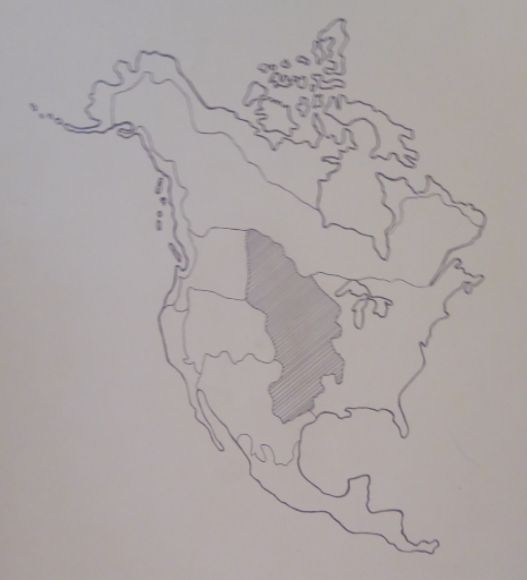 The shaded area on the map shown above shows the Plains culture area.
The shaded area on the map shown above shows the Plains culture area.
Moccasins
Traditional Plains Indian footgear consisted primarily of moccasins: both soft-soled and hard-soled. Unlike the European footgear at the time of the European invasion, moccasins were made specifically for the right foot and the left foot. Moccasins were often decorated with quills and later with glass beads. In her book Encyclopedia of American Indian Costume, Josephine Paterek reports:
“Ceremonial moccasins were often painted and decorated with fringes and bands of quillwork.”
Clothing
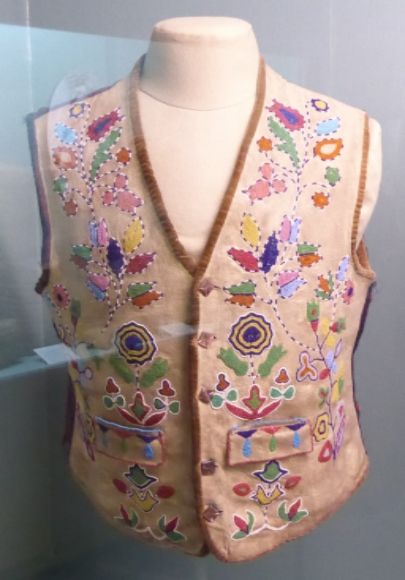 Shown above is an Eastern Sioux man’s vest.
Shown above is an Eastern Sioux man’s vest. 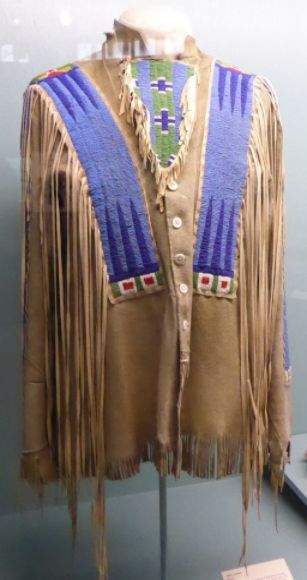 Shown above is a man’s jacket. The bands of beadwork over the shoulders and down the sleeves is typical.
Shown above is a man’s jacket. The bands of beadwork over the shoulders and down the sleeves is typical. 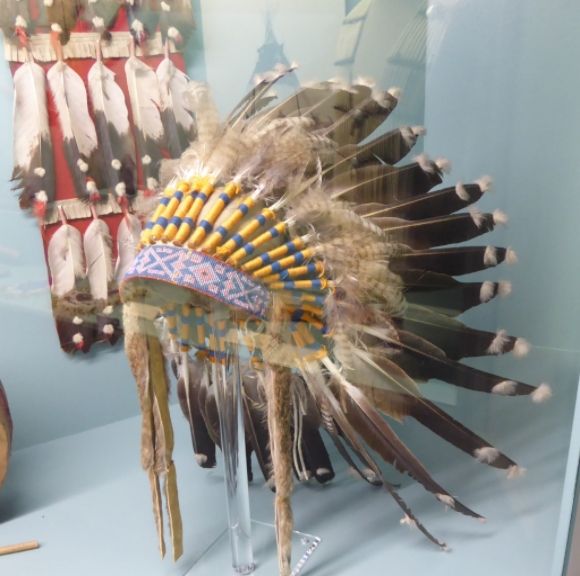 Shown above is the type of headdress which has become almost stereotypical of Plains Indians.
Shown above is the type of headdress which has become almost stereotypical of Plains Indians.
Josephine Paterek reports:
“Except for occasional fur caps in the winter, the Plains Indians went bareheaded year-round. But they made use of ceremonial headgear. The best known is the famous feathered warbonnet, the trademark of many contemporary Indians, worn by some whose grandfathers never heard of it.”
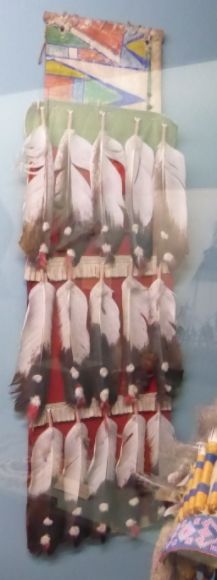 Shown above is a feathered trailer which was worn for dancing.
Shown above is a feathered trailer which was worn for dancing. 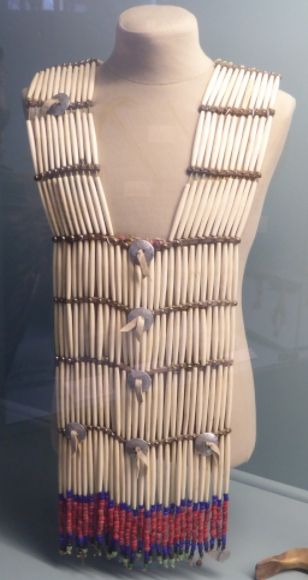 Shown above is a decorate breast plate made from hairpipes (bone beads). Hairpipes was a trade item made by the Euro-American traders specifically for sale to Indians. While breast plates were worn by both men and women, women worn a longer breast plate.
Shown above is a decorate breast plate made from hairpipes (bone beads). Hairpipes was a trade item made by the Euro-American traders specifically for sale to Indians. While breast plates were worn by both men and women, women worn a longer breast plate.
Clubs
According to the Museum display:
“Several types of clubs were used by Plains people. They were originally used for warfare. As more effective weapons came into use, clubs become symbolic. They were carried by men in military societies as a badge of office and seen as a symbol of bravery.”
Musical Instruments
According to the Museum display:
“Native American drums were usually made by stretching skin over a wooden frame. The drum typically had only one head. Drumsticks were made by wrapping layers of leather around the end of a stick. Drums, flutes, whistle, rattles, and rasps were the major musical instruments used in North America.”
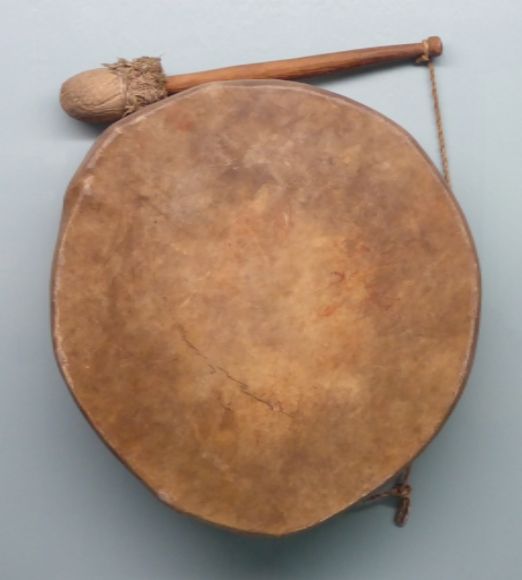 A single head drum is shown above.
A single head drum is shown above. 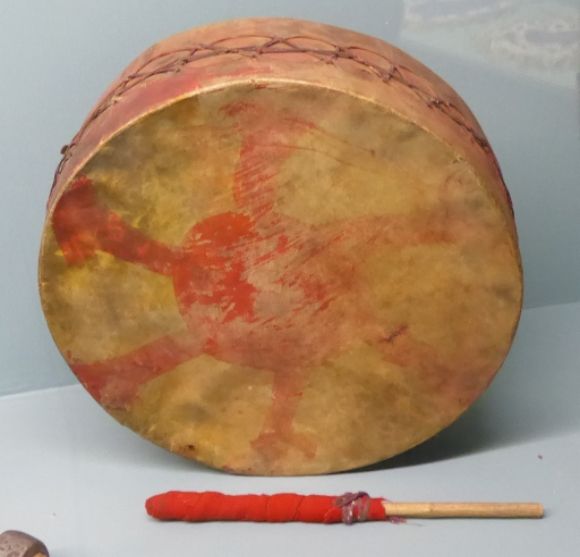 A double-headed drum is shown above.
A double-headed drum is shown above.
Other Items
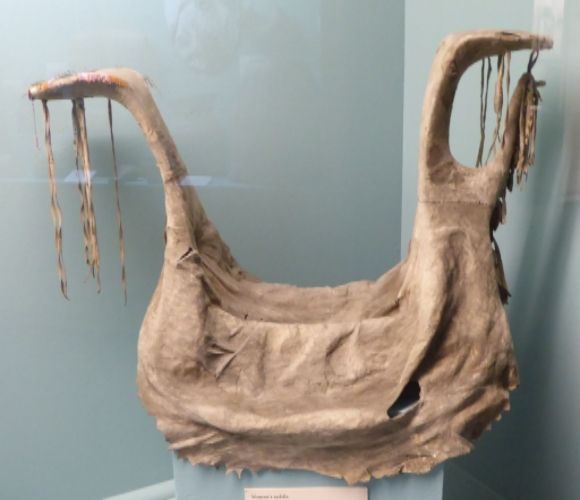 Shown above is a Crow woman’s saddle. It was made with a cottonwood frame covered with buckskin.
Shown above is a Crow woman’s saddle. It was made with a cottonwood frame covered with buckskin. 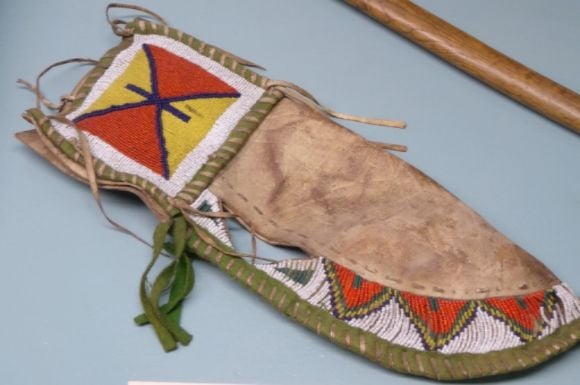 Shown above is a knife sheath.
Shown above is a knife sheath.  Shown above is a scraper made from elk antler. This would have been used in processing animal skins to remove flesh and hair. This scraper once had a metal blade attached to it.
Shown above is a scraper made from elk antler. This would have been used in processing animal skins to remove flesh and hair. This scraper once had a metal blade attached to it. 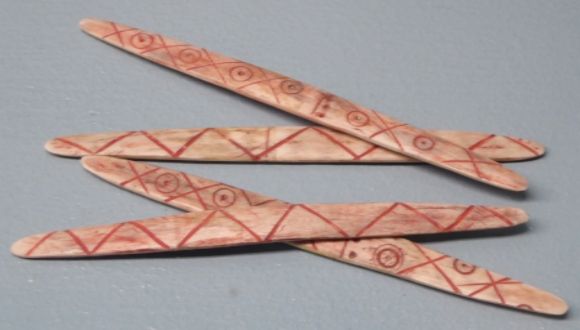 Shown above are some game sticks. These are made from buffalo bone. Game sticks, in sets of four, are used like dice.
Shown above are some game sticks. These are made from buffalo bone. Game sticks, in sets of four, are used like dice.
Small Beaded Bags
Men often used small beaded bags for personal belongings.
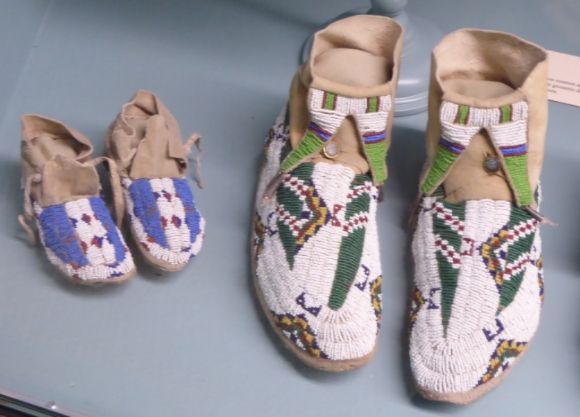
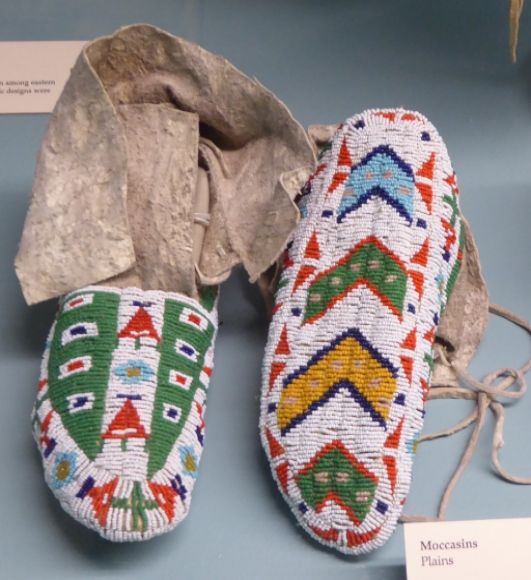
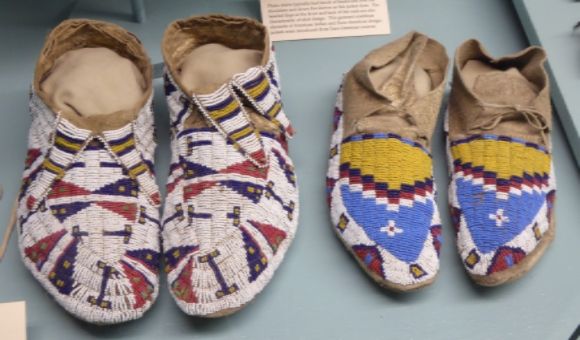
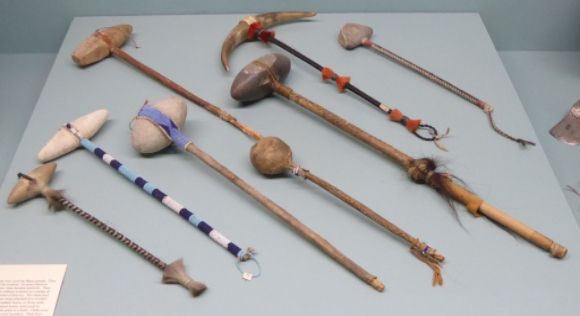
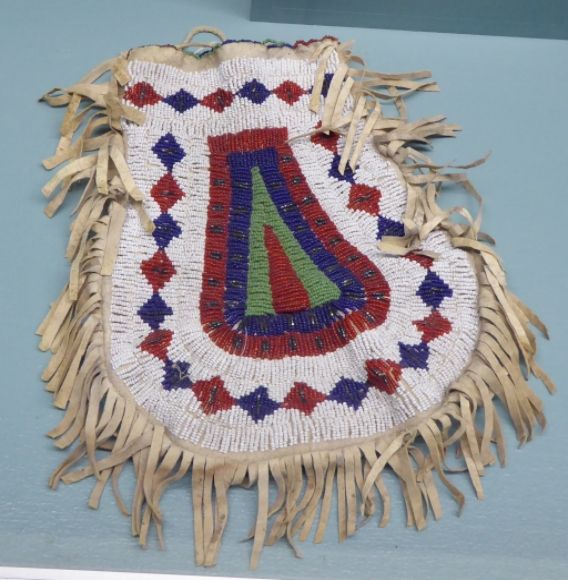
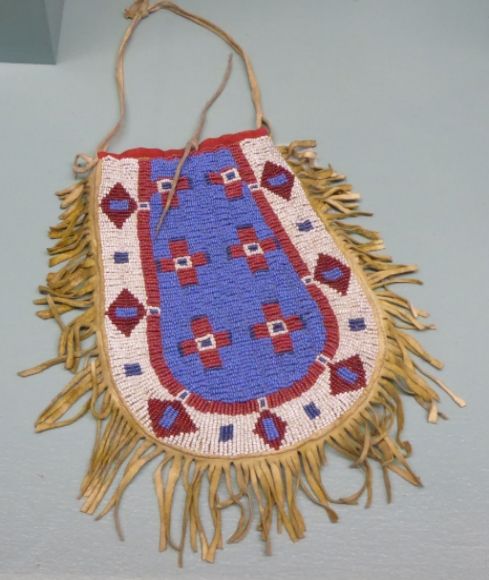
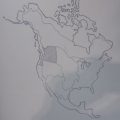
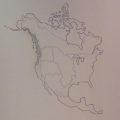
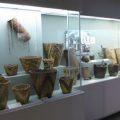

Leave a Reply